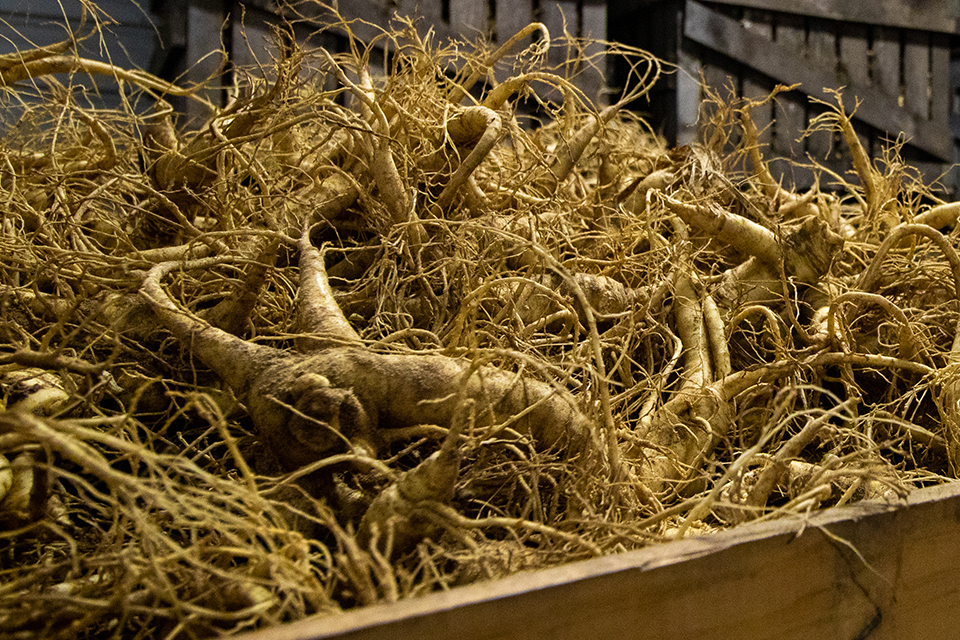
Farmer Name: Dan Keresturi
Farm Name: Keresturi Farms Limited
Farm Location: Scotland, Ontario
Approximately, how many acres are under your care?
400 acres.
How long have you been farming? When did you get into growing ginseng?
I have been farming for 20 years. I grew up on the farm, making me the fourth generation on this farm. My great-grandpa farmed tobacco, so we were tobacco growers. My grandpa and my dad also grew tobacco. In the mid to late ‘80s, my dad quit growing tobacco and started growing ginseng. And here we are today.
Do you know why your dad wanted to grow ginseng instead?
Tobacco was on the decline in the 80’s and there was a new crop, ginseng, being grown. My dad started with a half acre and never looked back.
Who works on the farm with you?
My mom and dad are still quite involved. My wife is as well. We have three young kids – a son and two daughters. Hopefully one day, one of them might want to farm and can keep our family farm going.
Do you or your family members consume ginseng?
My wife drinks ginseng tea – a honey lemon ginseng tea in particular. I’ll take ginseng when I’m feeling a little under the weather. There’s always some around.
Do you have any workers on the farm outside of your family members?
We bring in at peak time about 14 offshore workers from Mexico. That’s a huge part. I definitely wouldn’t be able to farm without those guys.
What unique challenges do you think that ginseng growers face?
Dealing with whatever mother nature brings, whether it’s too much rain, not enough rain, too hot, too cold, frost and everything. Those things definitely don’t make growing easy. It’s a really fickle crop to bring all the way to harvest, there are a ton of obstacles.
How has the heat been affecting the crops this year?
Ginseng shuts down when it gets over 30 degrees. It won’t grow in that extreme heat. Rain is tougher to deal with. Ginseng doesn’t like having wet feet. Too much moisture can cause it to rot and make it susceptible to other diseases. It’s a crop that requires never-ending maintenance.

How are you incorporating sustainability practices into your farm in whatever ways that you can?
We use organic amendments, so manure and whatnot before we plant the ginseng. We also use some bio-fumigants which are like a mustard cover crop. We grow that before the ginseng as well. It helps to sterilize the ground and clean up the soil. We also grow another crop before the ginseng – pearl millet – which helps control nematodes.
What do you hope to see from the future of ginseng farming in Ontario?
I hope to see that it’s a prosperous future for all ginseng farmers. That we can continue to grow ginseng and make a living doing it. I hope my children will be able to grow ginseng as well, and we can figure out any re-plant problems.
What do you enjoy most about being a ginseng farmer?
Constantly learning about growing ginseng. You think you have it down, but something always comes along and makes you rethink what you’re doing. Or, another challenge pops up that you have to deal with. I enjoy the challenge and like continuously learning about it. It’s a resilient crop if you know what you’re doing.
When is harvest season for ginseng, ideally?
It’s usually early October. Once we dig it up it goes into cold storage for two weeks. Then we take it out of the cold storage, process it, wash it all, and grade out any defective roots. And then it goes into dryers, like kilns, where it’s dried for another two weeks. It is then graded again and boxed up ready for sale. The entire process goes from October until early-December. After harvest we plant our next crop, so there’s definitely always something to do.

